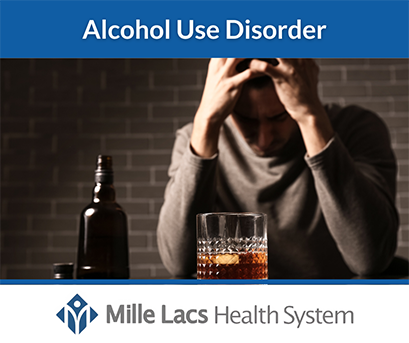Alcohol Use Disorder: Risks, Symptoms, and Solutions
April 18, 2025
April is designated as Alcohol Awareness Month. According to the Centers for Disease Control and Prevention, excessive alcohol use causes 178,000 deaths each year, making it one of the leading preventable causes of death in the United States. These numbers have been on the rise in the last 10 years for both men and women, and the Minnesota Department of Health indicates that Minnesota has one of the highest binge drinking rates in the nation. Fortunately, treatment for alcohol use disorder (AUD), also known as alcoholism or alcohol abuse, has been proven to help people reduce the amount that they drink and potentially stop drinking altogether.
AUD is a medical condition in which the ability to stop or control alcohol use is impaired, regardless of its consequences. This includes binge drinking, which is when a male has five or more drinks within two hours or four drinks for a female. One drink is defined as 12 ounces of beer, eight to nine ounces of malt liquor, or five ounces of wine. Individuals with AUD typically develop a tolerance to alcohol and need to drink more to feel the same effects as they once did.
Symptoms of AUD can vary from mild to severe. Some common signs include spending an excessive amount of time drinking, failing to meet obligations at work, school, or home due to alcohol use, drinking even though it’s causing physical pain, and using alcohol in unsafe situations (driving). One may also begin to suffer from withdrawal symptoms when they stop drinking, which may be accompanied by nausea, shaking, and sweating.
Several risk factors exist that can increase the likelihood of developing AUD. A family history of heavy alcohol or substance use is one of the greatest risks. Problems during childhood, such as abuse and conduct or mood disorders, are also linked to AUD. Additional factors, including depression, PTSD, early alcohol use, having a close friend or partner who drinks, and societal norms that are permissive of alcohol consumption, can also contribute to the development of AUD.
Medication can play a key role in recovery, particularly Vivitrol (extended-release naltrexone), a monthly injection that helps reduce cravings and prevent relapse. Other oral medications, such as naltrexone, acamprosate, and disulfiram, are also FDA-approved and non-addictive. Attending local support groups can also prove helpful for long-term recovery.
If you or someone you care about is struggling with alcohol use disorder, know that help is available. Mille Lacs Health System’s Addiction Recovery team is dedicated to providing compassionate support and treatment tailored to the unique needs of each individual. No referral is needed—call 320-532-2978 to make a confidential appointment and take the first step toward reclaiming your health and well-being.
